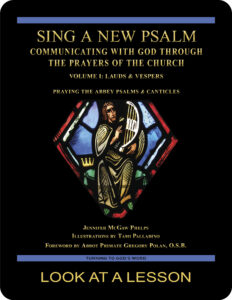wrath
 The twenty-seventh chapter in the Book of Sirach (NABRE) looks at the role of wrath, anger, and vengeance in connection with faith. It’s worth being aware that the Book of Sirach is one of the deuterocanonical writings that is recognized as belonging in the Bible by the Catholic Church but not accepted as canonical by most Protestant Christian denominations. The major difference is that it predates Christ but originally was written in Greek rather than in Hebrew. The argument against preserving it hinges on the suggestion that it was heavily influenced by Greek thought.
The twenty-seventh chapter in the Book of Sirach (NABRE) looks at the role of wrath, anger, and vengeance in connection with faith. It’s worth being aware that the Book of Sirach is one of the deuterocanonical writings that is recognized as belonging in the Bible by the Catholic Church but not accepted as canonical by most Protestant Christian denominations. The major difference is that it predates Christ but originally was written in Greek rather than in Hebrew. The argument against preserving it hinges on the suggestion that it was heavily influenced by Greek thought.
The Book of Sirach 27:30 (NABRE) addresses the topic of wrath, which also shows up in numerous other places in Scripture, especially in the Old Testament. By context in the Book of Sirach, we see that it is wrath of humans against humans rather than wrath of God against humans, although the word can refer to either. The word used in the Book of Sirach for wrath is the Greek word manis, which is significant because it also is the first word and key theme of Homer’s Iliad, a story about the great revenge Achilles takes on his own people and his enemies.
In Greek thought, Achilles’ behavior is seen as virtuous and held up as a model. How does the reading from the Book of Sirach treat the same core concept? On that basis, how corrupted by Greek thought do you think the author of the Book of Sirach is? Based on the Gospel According to Matthew 18:21-35 (NABRE), what does Jesus see as the role of revenge in serving God?
you also may like Volume I of our Psalms study
 Sing a New Psalm: Communicating with God Through the Prayers of the Church—Volume I: Lauds & Vespers provides an in-depth look at Psalms prayed in morning and evening liturgies. (Volume II, set for publication in 2024, looks at Vigils, Day Prayer & Compline.) The study is based on The Abbey Psalms and Canticles, a translation prepared by the Benedictine monks of Conception Abbey and published by the United States Conference of Catholic Bishops (USCCB). Click on the book’s cover to view a sample lesson.
Sing a New Psalm: Communicating with God Through the Prayers of the Church—Volume I: Lauds & Vespers provides an in-depth look at Psalms prayed in morning and evening liturgies. (Volume II, set for publication in 2024, looks at Vigils, Day Prayer & Compline.) The study is based on The Abbey Psalms and Canticles, a translation prepared by the Benedictine monks of Conception Abbey and published by the United States Conference of Catholic Bishops (USCCB). Click on the book’s cover to view a sample lesson.
 Click on the picture of the statue of Moses with horns (above) to learn more about Lost in Translation. A new entry is archived each Monday. Contact us to receive Lost in Translation by email every week. You may use any of the contact links on our website to ask Matthew a question.
Click on the picture of the statue of Moses with horns (above) to learn more about Lost in Translation. A new entry is archived each Monday. Contact us to receive Lost in Translation by email every week. You may use any of the contact links on our website to ask Matthew a question.
